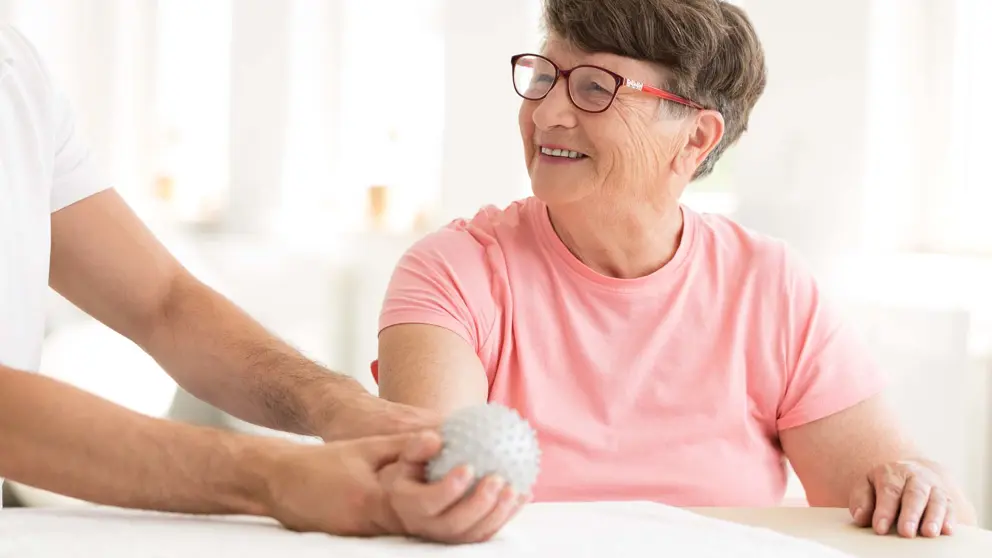While the COVID-19 pandemic has turned lives upside-down, it’s also shown that programs and therapies can deliver good – and sometimes better – results when they pivot to online platforms.
GRASP is one such success story. The program, called Graded Repetitive Arm Supplementary Program, was developed by Dr. Janice Eng at the University of British Columbia with funding from Heart & Stroke donors.
Watch this video of a stroke survivor taking part in a hand and arm exercise where they clip pegs to the edge of the cup:
Popular with physicians worldwide, GRASP is an exercise program that helps people regain use of their arms and hands after stroke.
When COVID-19 shut community based programs in 2020, GRASP went entirely virtual.
“We found that, as a virtual program, GRASP was effective and people liked it,” says Dr. Chieh-ling Yang, a postdoctoral fellow in Dr. Eng’s lab funded by the Heart & Stroke Canadian Partnership for Stroke Recovery.
Virtual GRASP is continuing, with participation higher than usual. This means people who can’t travel to sessions are able to join from home. They can even connect with other stroke survivors from around the world.
“The pandemic opened up a lot of possibilities,” Dr. Yang says. “We learned to adapt and to do things usually done in person.”
To learn more about stroke diagnosis, treatment and recovery, visit: heartandstroke.ca/stroke
- Learn more about exercising after stroke
- At-home exercises for stroke recovery
- Find community exercise programs near you

